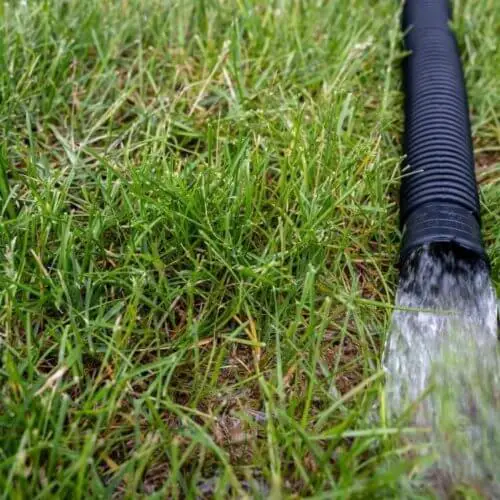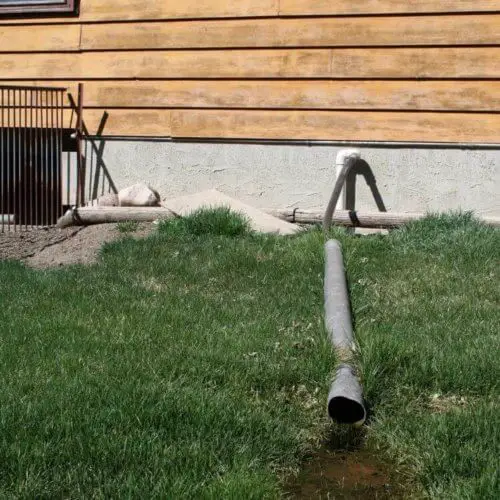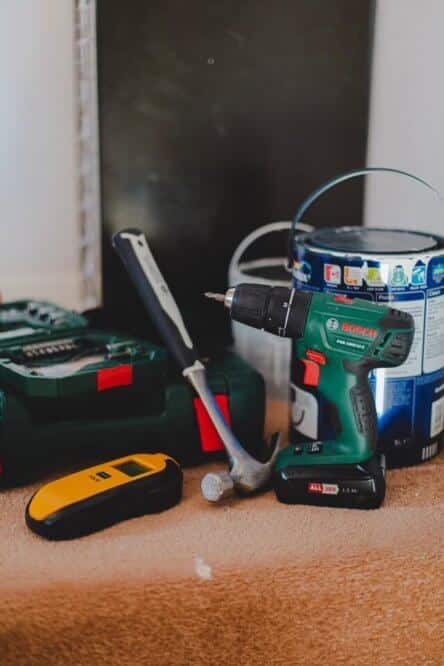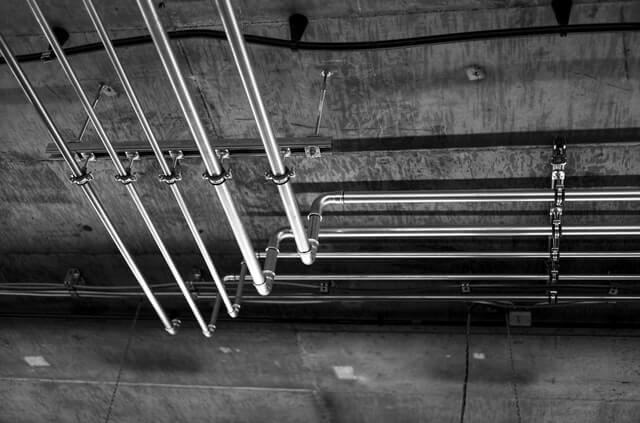Water damage is a very real threat to just about any basement. In order to prevent it, we frequently employ resolutions such as sump pumps. However, no matter how simple a solution may be the actual implementation of it can require extra effort. In this case, we are talking about sump pump and sump pump discharge rules.
Sump pump discharge rules

Even though sump pumps are a pretty standard part of our households, it’s essential to know some important rules when it comes to their installation and use. Otherwise, we could find ourselves with troublesome side effects of poorly implemented sump pumps. Poor implementation can ruin the effectiveness of even the best of sump pumps. [1]
Connecting sump pump to a sewer
There are many places and areas where the disposal of sump pump discharge is possible. Whether it’s a dry well, a tank on the side of our house, our garden, or other outlets, we require a place to dispose of the discharge. However, there are some prohibitions when it comes to getting rid of sump pump water. [2]
The one place you shouldn’t connect your sump pump to is the local sewer line. No matter how elaborate or well-kept the local sewer system is, sump pump discharge is still not legal to deposit in them.
Of course, there’s a reason for that. When the households were allowed to deposit their sump pump discharge, the sewer lines were frequently overburdened by the influx of water during rainy months. This would lead to cases where both sewer water and rainwater were expunged into the water surfaces without any filtration or refinement.
The whole process increased the pollution of areas the water was deposited into, so the sump pump discharge being connected to sewer water was made illegal. Connecting it to a storm drain still function well and is fully legal, but the connection to actual sewer lines could land you in some serious trouble.
Sump pump draining into yard

It’s essential to understand how to drain your sump pit properly. One of the ways to drain sump pump discharge is by letting it run off into your yard. The concern then becomes how to do that correctly.
The first step when depositing water is knowing that the sump pump discharge can vary heavily depending on the weather. During rainy months, the amount of water flowing out of it can be pretty huge and could lead to issues if improperly dealt with. The most common of which are potholes that can ruin the appearance and soil of the yard.
Properly configuring your sump pump’s discharge drain is the only way to keep them all suitably functional. It’s important to remember that sump discharge pipe should appropriately distribute the water around the area to keep the yard safe from potential potholes or other sources of overwhelming water surge damaging the area.
The best way to go about this is by employing certain sump pump discharge ideas that will aid in getting rid of the water without causing problems to the yard.
Sump pump discharge regulation
Among the rules, there are always certain regulations to keep in mind. For the sump pump discharge, most frequent variable in terms of regulations will stem from the area you find yourself in. These regulations may be one tied to infrastructure, sewer lines, or position of your sump pump discharge pipe. We’ll check how such regulations apply in a specific place in our next category.
Sump pump discharge rules Delaware
In Delaware, the rules for sump pump discharge may vary somewhat and should be consulted when installing a sump pump drainage in this area. It requires that the sump be tightly covered and vented. The sump pump itself will empty the sump pit.
Of course, the pump won’t receive unnecessary water. All the water that can be discharged into the other facilities of the house will be deposited there.
Check valve
An important thing to add to your sump pump is a check valve as well as a fully open valve. The valves are used as a way to manage the working flow of the sump pump. The valves themselves are located above the sump cover. The valves need to be accessible when it comes to their location. They will always be positioned on the higher part of the sump pump.
Sump design
The design of this entire system needs to be kept up to standards that the State of Delaware Plumbing Code describes. This means that the sump pump’s capacity and head will be made by specifications related to the anticipated amount of work the sump pump will do. [4]
The sump itself has regulations that need to be followed. Specifically ones of its size. For example, the sump pit cannot be smaller than 18 inches in diameter and 24 inches in depth. Exceptions may apply, but only when you get approval from local authorities to construct a smaller sump pit.
The pit itself has to be made out of certain materials too. Examples include concrete, steel, plastic, or other materials that have been approved for the construction of sump pits. The bottom of it needs to be solid and provide support for the pump that shall be installed into the sump pit.
Drainpipe regulations
The pipes that are used to take out discharge from the sump pit have some regulations as well. The limit on materials comes first. The materials this pipe can be made out of include ductile iron, PE, CPVC, PVC, and copper or copper alloys. The materials utilized all have different properties that should be considered before the installation, but the limits still apply.
The rating of these drainage pipes is also important. They will be measured in terms of maximum operating pressure as well as temperature.
The fittings on your pipes are required to be properly compatible too. Whether they are on the surface or below it, they need to comply with the proper sizing of the pipe. When buried, they need to be suitable to stay underground. This regulation is introduced in order to keep the sump pump installations properly executed without sudden necessities to come back and reinstall items.
The flimsy jobs can also be a source of trouble for you or the whole area, so making sure the original installation is done properly is important.
How to run a sump pump discharge line?

The discharge line of our sump pump is an important part of the installation that allows us to get rid of all the excess water within our household. The sump pump discharge line gives us the ability to dispose of this water in ways that won’t harm our household. This process involves a few steps so let’s get through them.
What type of pipe for sump pump discharge do I use?
The material and quality of it is an important aspect of pipes. The discharge pipe will present one of the most important aspects of the whole system. The higher the quality of the pipe, the less likely it is to fail or get overwhelmed.
As far as types of pipe go, we’ve already mentioned them but let’s summarize once more. The sump pump utilizes PVC, CPVC, copper, ductile iron, and other approved materials that we’ve covered before, as well as some that haven’t been mentioned.
The usual practice nowadays is to use PVC pipes for your sump pump discharge needs. The PVC pipe is resistant to multiple dangers that the discharge line could face. Additionally, the popularity of PVC pipe makes it easy to find any items you may need to customize. Be it tools or connectors, pipe installation will be very simple.
It’s one of the most basic pieces of advice in terms of knowing how to run your sump pump discharge but knowing what materials to use is paramount to the long-term health of your installation.
Sump pump discharge landscaping
With the sump pump, our basement will have the excess water discharged from it. However, that water has to go somewhere. This will usually result in the majority of that water being dispersed throughout the yard.
While the standard amount of water doesn’t cause many problems in the yard, at worst, you may see some minor puddles accumulating. Natural disasters and heavy rain could induce a far more extreme volume of water. This excess water could result in worse side effects such as potholes.
To engage and mitigate these issues, we should get acquainted both with the way we should run the sump pump discharge and how we should landscape our yard to accommodate it better.
An important concern for running a sump pump discharge line well will be to stick to proper distance and quality of disposal. As far as matters of the yard go, it’s all about avoiding obstruction of the sump pump with planters and other yard items that could compromise it.
The sump pump discharge pipe should be rerouted beyond the plant beds too. The water should end up running into a dry well which you can then use as a source of rainwater for your plants. The soil itself can be nicely hydrated through this behavior as well. [5]
Another thing you can do with sump pump landscaping. The way we do it is by routing the discharge directly into the plants. Of course, you should be careful not to run it into more fragile plant life because they could get overwhelmed by excess water rather than neatly absorbing sump pump discharge. Shrubbery and trees work well when it comes to plants that can absorb the sump pump’s excess discharge.
Sump pump discharge rules
The rules of running a discharge pipe remain straightforward here too. The discharge will need to be deposited either straight into the yard or somewhere on the side, either a dry well or some type of tank. The place we deposit it in should be capable of handling huge quantities of water and be located away from our house.
Having a bigger capacity makes it harder for the container to be overrun. The added distance makes sure that even if it does, it won’t damage our home. A dry well itself is usually a simpler solution if you can set aside some time to plan it out. [6]
You should make sure the discharge pipe itself is under a slight slope. By giving it a minor drop, we are allowing water to flow easier away from our home. This slope also makes sure the water won’t flow back into the sump pit, potentially flooding it.
How deep to bury sump pump discharge

The act of burying your sump pump discharge pipe at a proper depth is another important part of a properly operating discharge system. By abiding by established rules, you’ll have a much safer installation overall.
When it comes to discharge piping depth, you should aim to install the discharge line 2 feet below the frost line. Keep in mind that the frost line varies between countries and states, so check what the frost line in your area is. Proper burying depth prevents the water in your pipes from freezing. If it was to freeze up, you’d be met with the issue of a clogged sump pump discharge line.
While it’s possible to bury the pipe even deeper, it’s not recommended. Keeping it closer to the surface makes the pipe more accessible when repairs are required. Gauge the proper depth but don’t go overboard with the depth of burying the pipe, or you could make it hard to reach.
Sump pump discharge diffuser
At some point, the discharge pipe of your sump pump ends. All water pumped out will be expelled at the end of this pipe. However, there are still ways to upgrade your experience with the sump pump discharge line.
This is done with the aid of sump pump diffusers. These diffusers come in many shapes and sizes, but their role stays the same. Sump pump diffusers are supposed to disperse the volume of water coming out of a discharge pipe, making it easier for the soil to manage. This prevents those areas where heavy rains are common from suffering sudden potholes in the yard at the point where the pipe leads off to. [7]
There’s a bit more utility to the diffuser too. Due to it being installed at the end of the pipe and providing a slight cage for the pipe, it can serve as mild protection from the cold. It’s not impossible for the ends of our sump pump discharge lines to freeze even if we follow the rules so having extra reassurance is good.
Conclusion
In conclusion, following the sump pump discharge rules keeps us safe from both legal troubles and potential problems with the installation later down the line. After all, these rules were made to make the use of sump pumps as reliable as possible without adversely affecting anybody else.
When you have problems with the sump pump, checking some predefined solutions can work wonders in correcting the current behavior of your sump pump discharge line. Focus on the important factors that could be the source of it and employ corresponding solutions for the best effect.

Michael Davis is a heating & plumbing expert who currently works as independent contractor in SC. He also writes for Plumbertip.
For almost 10 years he worked on various plumbing tasks across South Carolina.


